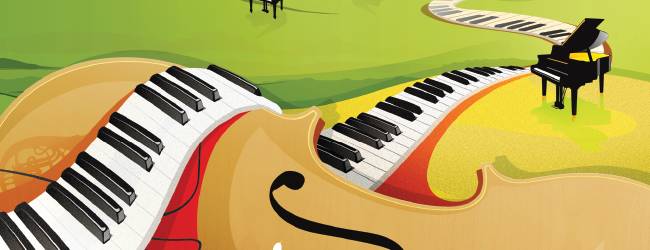My big fat Simply Music Playlist… how will I ever keep it all alive?! Do you have a hard time managing this aspect of your piano lessons? It’s fun to learn new pieces but sometimes it can seem like a lot of work to remember everything you’ve learned. It’s important that you work with your teacher and your life coach to help you make sure this part of your Simply Music journey is running smoothly and efficiently. Just as you haven’t ever forgotten any of the letters of the alphabet (if you did you wouldn’t be able to make sense of what you read and you wouldn’t be able to write), you will need to remember the songs on your playlist to help you with more advanced songs.
The centrality of a vibrant playlist supports the long-term goals Simply Music’s curriculum has for each and every student: you will experience playing as a perfectly natural self-expression, you will be able to sit down at any piano, anywhere, and always be able to play at least 40 or 50 great-sounding songs of all different styles, and you will have the foundational tools and concepts to take with you in any future music learning you wish to pursue, including independently of a teacher, and you will get to feel great about yourself while learning and playing. Moreover, your playlist will help you with the ultimate goal of having music as a companion for the rest of your life. What a gift you are giving yourself while you are working to keep your playlist alive!
The most important thing you can do to ensure a growing and vibrant playlist is to keep track of your playing by marking your playlist every time you sit down to play. Just as you probably wouldn’t leave your house without putting your shoes on, get in the habit of not leaving your piano until you’ve marked your playlist. Marking the playlist every time will support you each week in knowing what’s been played and what’s still left to play.

Once a song can be played easily and musically, you’ll want to play it often enough so that you never have to relearn it; it is frustrating to go back and learn a song you already learned once. For some songs, that might mean every day, for others, every two or three days, some maybe once a week or even less. You can talk more about frequency with your teacher (but don’t forget, new pieces should be played at least 5 or 6 days a week for the first few weeks before they are familiar enough to need less attention).
If you are using a pre-printed playlist it will be easier to stay organized–be sure to highlight your current songs to make it easier to immediately see what to play. Ask for help from your life-coach with this if you think you need it. Neglecting this easy task of highlighting and marking will lead to a playlist that erodes and degrades over time. Your pieces will become less fluent and many will even be forgotten. It will become increasingly difficult to move forward with a compromised playlist.
Maintaining a playlist is separate from your regular daily practice of current new material you are working on. After about a year it might take an extra thirty to forty minutes a week to keep your playlist alive, apart from the 20 minutes of daily practice. Your teacher will help you manage this aspect of your lessons. It becomes much easier to keep the playlist alive when you have a system in place.
You might play all your Level 1 songs on Monday, Level 2 on Tuesday, and so on. Or you might play all your blues one day, your classical another day, etc. You might play your favorites first, play backwards through the levels, play the more challenging ones first, change the rhythms, add dynamics, play with the cd, etc. Mix it up to keep it fun. Do little mini-concerts for friends and family. And to keep the songs from getting boring over the many months you’ll need to keep them alive, put your unique stamp on them with a bit of improvisation.
If you can play a piece on your very first try without thinking twice about it, then skip a day and see if you can do that again the next day. If you can do it, try skipping two days, then three, and so on, up to a week maximum, until you can find the timing that works for keeping that piece alive. Try to play everything at least once a week.
Did you know that maintaining a vibrant playlist is easier if your initial learning always includes using the three tools that are central to the Simply Music methodology? Be sure, when you are first watching the DVD, to process the new material with your external speaker, your keypad and controlling the events. Once you can play a piece easily on the keypad then take it to the piano. Taking the time to learn this way will go a long way to more easily managing a large repertoire.
And be sure you can still play your pieces on the keypad at any time after you have done the initial learning. Good habits with these tools will ensure you are learning a way of learning that will end up assisting your full-on musicianship, including in the areas of reading but encompassing so much more, including freedom of playing without written music, whether a song you wrote, an improvisation of the moment, or someone else’s work. Deeply knowing how to use these tools will make learning any new piece relatively fast and easy for the rest of your life so you can keep your playlist growing forever!
Have fun playing your big vibrant playlist!







